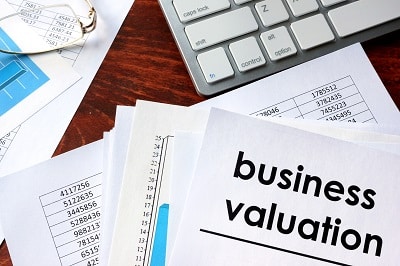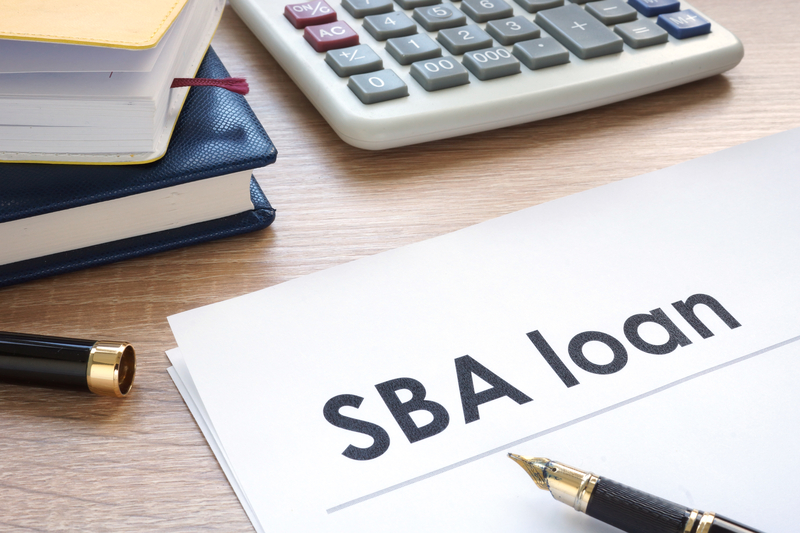A business owner or prospective seller may want to know the value of their business before deciding to put it on the market. Buyers may wish to calculate the value or compare the asking price of a business they are interested in. In the case of business owners considering the sale of their business most business brokers offer a Market Value Analysis and in fact our firm offers a comprehensive free Business Market Value Analysis to prospective sellers. In either case, the simplest method to obtain an approximate business value is to use the Earnings Multiple method (also known as Market Data, Comps, Discretionary Earnings or DE Multiple).
Most business buyers and sellers/owners are somewhat aware of earnings multiples but few understand how to properly use and apply these multiples to value a business. There are many myths and opinions about what a business is worth and what “the” earnings multiple is. In fact, earnings multiples vary widely by industry as well as by earnings. There are different multiples for Discretionary Earnings (DE aka SDE or Seller’s Discretionary Earnings) and EBITDA (Earnings Before Interest Taxes Depreciation & Amortization). DE multiples are lower than EBITDA multiples because with DE you are multiplying a higher earnings number against a lower multiple and with EBITDA you are multiplying a lower earnings number against a higher multiple. Ideally, you should get roughly the same value for both approaches. There are no valuation multiples for “net profit” for a small-midsize business and simply applying say a DE multiple to Net Profit will result in a dramatically undervalued figure for the business. As explained below, the Net Profit does not reflect the actual earnings of a small business, thus using it for valuation purposes is meaningless.
While Earning Multiples seem like a simple method to value a business, and they can be, they must be used correctly and on the right earnings value to deliver the correct valuation for a business.
Discretionary Earnings vs Net Profit vs EBITDA
First you need to understand the difference between each earnings type and how to calculate them, then look at how to apply them.
- Net Profit:
This is the starting point for calculating both DE and EBITDA. When a business broker or valuation analyst refers to Net Profit this is the Net Profit shown on the company tax returns. The Net Profit on the company P&L is often different from the Tax Return Net Profit as a result of changes made by the accountant or CPA at year end which were not reconciled with the P&L. The Tax Return Net Profit is the only figure used for valuation purposes (note that SBA lenders and valuation analysts only use the Tax Return Net Profit). - EBITDA:
EBITDA is simple to calculate. Start with the Net Profit from the Tax Return and add the Interest, Taxes, Depreciation, & Amortization. This is the non-normalized EBITDA and for very large businesses this figure is correct.For small businesses, a Normalized EBITDA is used where you must first add back all of the owner’s benefits & compensation and then subtract a replacement salary for the owner at market rate. This would be the salary of a manager to run the business in place of the seller. This is called Normalized EBITDA which is used for small businesses. A simple way to determine Normalized EBITDA is to take the DE and subtract a replacement salary for the owner at market rate.
Discretionary Earnings (DE):
DE is the most commonly used valuation multiple and it is also the most complicated figure to calculate. DE basically is EBITDA + owners salary + owner’s benefits & expenses. This sounds simple enough and it would be except that many owners bury these expenses which can make it difficult to verify these figures. One key rule for owner’s expense add-backs is that they MUST be tied to an expense line item on the tax return. If the expense is not shown on the tax return then it cannot be used as an add-back for calculating DE as it was not shown as an expense on the tax return, which is what is used to calculate DE.
Finding the Right Earnings Multiple for a Business
You can get Discretionary Earnings multiples and Business Valuation Reports from BizBuySell and Peercomps. BizBuySell offers valuation reports from $19.95 to $59.95 and Peercomps offers a one time comps search for $49 or a one time business valuation for $99.
The BizBuySell valuation is the simplest to use and the least expensive. While it is good for determining a price range, the downside is that it is not an accurate valuation program. You should only use it for validating a price range and not for determining an exact business value. Note that the comparable sales data in BizBuySell is broker provided, meaning that brokers input this data when a business is sold through BizBuySell. There are thousands of transactions in the database, the problem is that the way brokers record transactions can vary, making the data less consistent than Peercomps.
The Peercomps valuation is more comprehensive and uses better comparable sales data as their database is from actual closed SBA financed transactions. All SBA loans require an independent (third party) business valuation (appraisal) by a CVA (Certified Business Valuation Analyst). Thus this comparable sales data is more accurate and more consistent than broker provided comps. The downside of Peercomps is that it is much more complicated to use and obtain an accurate valuation. The user should be familiar with valuation methods in order to use Peercomps.
Steps to Finding Earnings Multiple Comparable Sales Data
- In BizBuySell or Peercomps select the Industry-Business Type (e.g. Distribution, Restaurant, Manufacturing, Construction – note that you can select more specific business types)
- Narrow the Gross Sales and Income ranges to values below and above the company’s annual revenue and income. Set a minimum value to eliminate businesses much smaller than the company you are considering and a maximum to eliminate businesses that are much larger.
- You can change the ranges to narrow or expand your results until you have a suitable number of comps (preferably at least 5 to 10 or more. In some cases there may be very few if it is a small niche).
- Now you should have comparable sales multiples for Discretionary Earnings and if you used Peercomps Normalized EBITDA as well. The next step is to apply the multiples
Important Notes:
- Most DE multiples do not include inventory or A/R (Accounts Receivable) and also assume that all liabilities are paid off by the Seller at closing.
- Peercomps multiples include “normal” inventory and BizBuySell comps may or may not.
- Normal inventory is the inventory required to operate the business. Excess inventory is not included in the earnings multiple.
Applying the Earnings Multiple to Determine Business Value
If you are using the valuation report from BizBuySell or Peercomps you can input the company earnings and revenue to obtain a value based on the Mean or Average Discretionary Earnings multiple. If you elected to obtain comparable sales data only your next step is to multiply the Mean or Average DE multiple to the DE you calculated. This will give you a value based on the Mean or Average multiple.
It is important to note and understand that the figure you just calculated is not an exact figure. The multiple you just used is an average. Thus, half of the businesses in the comps sold for less than that multiple and conversely half sold for more than that figure.
If you are considering a business that is exceptional it may be worth a premium and the average multiple may be on the low side. Likewise, if the business is below average it may be appropriate to apply a discount.
7 Factors that Affect Business Value and Earnings Multiples
- Quality of Financial Data
- Quality of Product or Service
- Competition
- Years Established
- Quality & Experience of Staff
- Infrastructure, Systems, Procedures
- Customer Concentration
Earnings Multiples are a convenient and relatively simple way to calculate business values, but as we discussed above, it is not an exact value and more of an average value. If you are buying a business the Business Broker should have a Recast Financial Statement showing the financials from the Seller’s tax returns and all of the add backs to arrive at the Discretionary Earnings. The Broker should also be able to provide you with Comps Data and a Market Value Analysis.
If you are Selling your business we recast your financial statements and prepare a comprehensive Market Value Analysis as part of our initial review of the business to determine the asking price.





